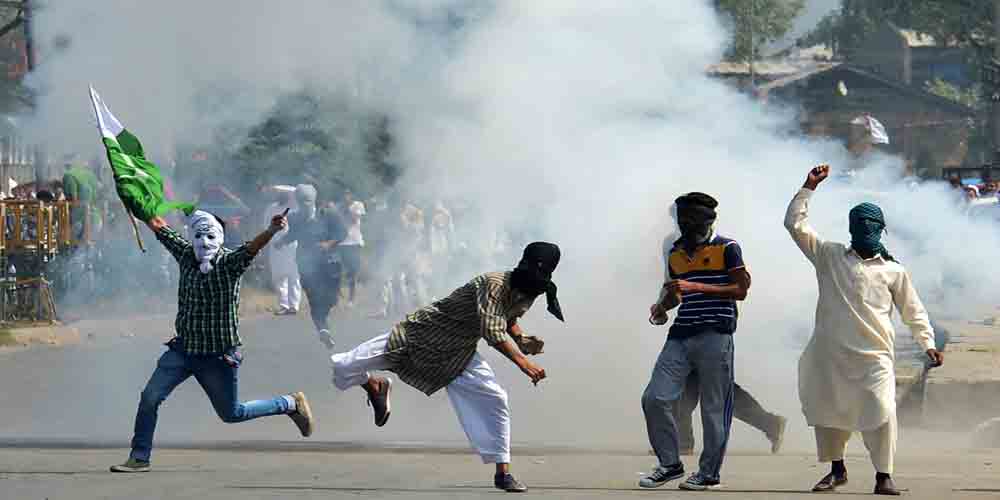India’s Kashmir Strategy: Success or Setback?
India’s Kashmir Strategy: Success or Setback? kashmir, the land of staggering beauty and unrelenting conflict, has long stood at the intersection of geopolitics, ideology, and history. Nestled in the lap of the Himalayas, this region has been a point of contention between India and Pakistan since the partition in 1947. Over the decades, countless strategies have been deployed to quell unrest and assert control. But in the recent decade, India’s Kashmir strategy has evolved dramatically—raising one critical question: has it been a success or a setback?

A Historical Prelude to the Present Dilemma
To understand India’s Kashmir strategy, we must first retrace the steps of history. The region acceded to India under the Instrument of Accession in 1947, a move contested by Pakistan, leading to several wars and a prolonged insurgency that took root in the late 1980s. From military operations to political negotiations, India has deployed myriad approaches over the years. However, the strategic shift post-2014 under the Narendra Modi government signaled a definitive pivot.
The Abrogation of Article 370: Bold or Brazen?
One of the most defining moments in India’s Kashmir strategy came on August 5, 2019. The Indian government revoked Article 370, which granted Jammu & Kashmir special autonomous status. This constitutional move was accompanied by a severe communication lockdown, mass deployment of troops, and the arrest of local political leaders.
Supporters hailed this as a masterstroke—a long-awaited move to integrate Kashmir more fully into the Indian Union. Critics, however, called it unilateral and draconian, warning of heightened alienation and international censure.
Economically, the region was promised a new dawn. Yet in the immediate aftermath, the internet shutdown and detentions disrupted livelihoods, suppressed dissent, and impacted local businesses and tourism gravely. The strategy, though audacious, was not without consequence.
Security and Counterinsurgency: The Iron Fist Approach
Militarily, India’s Kashmir strategy has leaned into a counterinsurgency model that emphasizes elimination of terrorist operatives, proactive intelligence gathering, and surgical precision strikes. Operations like “All-Out” have been launched to flush out local and foreign militants operating in the Valley.
Security forces have increasingly used technology—drones, surveillance grids, and AI-based threat detection—to tighten control. The results have been mixed. While there has been a measurable decline in organized terror attacks, the rise in targeted killings and recruitment of local youth by militant outfits raises red flags.
This iron-fist model has certainly eroded the infrastructure of terror to an extent. But whether it addresses the root causes of militancy—alienation, lack of opportunity, and political disenfranchisement—remains doubtful.
Diplomatic Balancing: Global Optics vs Domestic Realities
From a diplomatic standpoint, India’s Kashmir strategy has been carefully cloaked in narratives of development, democracy, and national integration. The international community, though initially concerned, has largely acquiesced to India’s explanation that Kashmir is an internal matter.
However, cracks are visible. Pakistan has kept the issue alive at forums like the UN, and human rights organizations have periodically raised alarms over alleged abuses. While India has managed to avoid global isolation on this front, the reputational cost persists.
Moreover, the bifurcation of Jammu and Kashmir into two Union Territories—Jammu & Kashmir and Ladakh—has posed new governance challenges. Bureaucratic rule has replaced local political representation, fueling frustration among various segments of the population.
Economic Revitalization: Promise vs Progress
The Indian government laid out an ambitious economic vision for Kashmir post-2019: new investments, tech parks, tourism booms, and agricultural modernization. Initiatives like the Global Investors Summit and startup incentives were designed to woo businesses into the Valley.
Yet the ground reality remains sobering. The fear of violence, bureaucratic red tape, and lack of internet connectivity during key periods have deterred sustained investment. Tourism, which briefly bounced back, was again jolted by the COVID-19 pandemic and sporadic incidents of violence.
Small signs of progress—such as increased apple exports, better road connectivity, and new educational institutions—exist. But for many locals, these remain insufficient to compensate for the loss of political agency and civil liberties.
The Human Dimension: Hearts and Minds
Any strategy that overlooks the emotional and psychological dimensions of conflict is bound to falter. India’s Kashmir strategy has often been critiqued for underplaying the importance of winning hearts and minds.
The younger generation of Kashmiris has grown up amidst curfews, checkpoints, and internet bans. For them, normalcy is defined not by freedom, but by the temporary absence of fear. Alienation continues to run deep, especially in the absence of a credible political roadmap.
Efforts like the “Back to Village” program and youth engagement campaigns have attempted to bridge the gap. However, without consistent political dialogue and genuine outreach, these efforts risk being seen as cosmetic.
Media Narratives and Information Warfare
Control of the narrative is a crucial pillar in India’s Kashmir strategy. The government has often blamed foreign-sponsored propaganda and biased reportage for misrepresenting the situation in Kashmir.
To counter this, New Delhi has promoted curated press visits, increased oversight of local journalists, and controlled online discourse through legal and technical means. While this has helped limit misinformation, it has also raised concerns over press freedom and transparency.
Social media blackouts, selective access, and arrests under laws like the Unlawful Activities (Prevention) Act (UAPA) have created a chilling effect among local reporters. This information asymmetry complicates the ability to assess the true ground situation.
Political Vacuum: The Missing Link
Perhaps the most glaring gap in India’s Kashmir strategy today is the absence of an elected government in Jammu and Kashmir. Since the dissolution of the assembly in 2018, the region has been under central rule.
The promise of holding assembly elections continues to hang in limbo, pending the finalization of delimitation processes and security assessments. This prolonged political vacuum has undermined faith in democratic processes, especially among mainstream parties like the National Conference and PDP.
Rebuilding trust requires more than administrative efficiency; it needs the restoration of political agency. Without representative governance, strategies—no matter how sophisticated—will lack legitimacy in the eyes of the common Kashmiri.
Education and Employment: The Game Changers?
Long-term peace and prosperity in Kashmir hinge on providing meaningful opportunities to the youth. Recognizing this, India’s Kashmir strategy has increasingly focused on skill development, educational reforms, and job creation.
New IIT and AIIMS institutions, vocational training centers, and scholarship programs aim to empower local talent. The army’s Sadbhavana programs and the police’s youth clubs have also attempted to create positive engagement.
However, the implementation remains uneven. Educated youth often find themselves grappling with underemployment, lack of industry, and systemic discrimination outside the Valley. Unless the economic ecosystem expands in tandem with educational outreach, aspirations will continue to outpace realities.
Civil Liberties and Rule of Law
A litmus test for any democracy is how it balances security with civil liberties. Critics argue that India’s Kashmir strategy has leaned heavily toward securitization at the expense of civil freedoms.
Extended detentions without trial, stringent laws like PSA and UAPA, internet bans, and limitations on peaceful assembly have raised serious constitutional questions. While the state has a legitimate interest in maintaining law and order, the proportionality of measures has come under global and domestic scrutiny.
Judicial interventions have been sporadic, and in some cases, delayed. The need for a transparent, accountable framework to govern such extraordinary measures remains pressing.
Cross-Border Dynamics and the China Factor
No discussion of India’s Kashmir strategy is complete without factoring in external players. Pakistan’s consistent backing of separatist elements and cross-border infiltration remains a potent threat.
However, a new variable has entered the equation—China. The standoff in Eastern Ladakh and China’s opposition to India’s internal reorganization of Jammu and Kashmir have added a new layer of complexity. The Line of Actual Control (LAC) has witnessed heightened tensions, drawing attention away from the traditional Line of Control (LoC) with Pakistan.
Navigating these overlapping fault lines requires nuanced diplomacy, strategic foresight, and military preparedness—making India’s Kashmir strategy a multidimensional balancing act.
Measuring Success: What Does Victory Look Like?
Is success defined by fewer terrorist attacks, or by the return of normalcy in schools, markets, and places of worship? Is it about the integration of laws, or the integration of hearts?
By some metrics—terror statistics, infrastructural spending, foreign silence—India’s Kashmir strategy has shown success. But by others—public sentiment, democratic deficit, and international image—the jury is still out.
The reality is neither black nor white. It is a complex tapestry of calculated risks, partial gains, and unhealed wounds.
The Road Ahead: Redefining Strategy
The path forward lies not in declaring premature victory or denying uncomfortable truths. Rather, it requires evolving India’s Kashmir strategy from a primarily security-centric approach to a holistic paradigm—where development, dialogue, democracy, and dignity move in unison.
Prioritizing local governance, ensuring transparency, upholding civil liberties, and restoring political processes must form the core of the next phase. Engagement must be constant, not conditional.
Only then can the Indian state hope to transform Kashmir from a region of contested identities into one of shared destinies.




